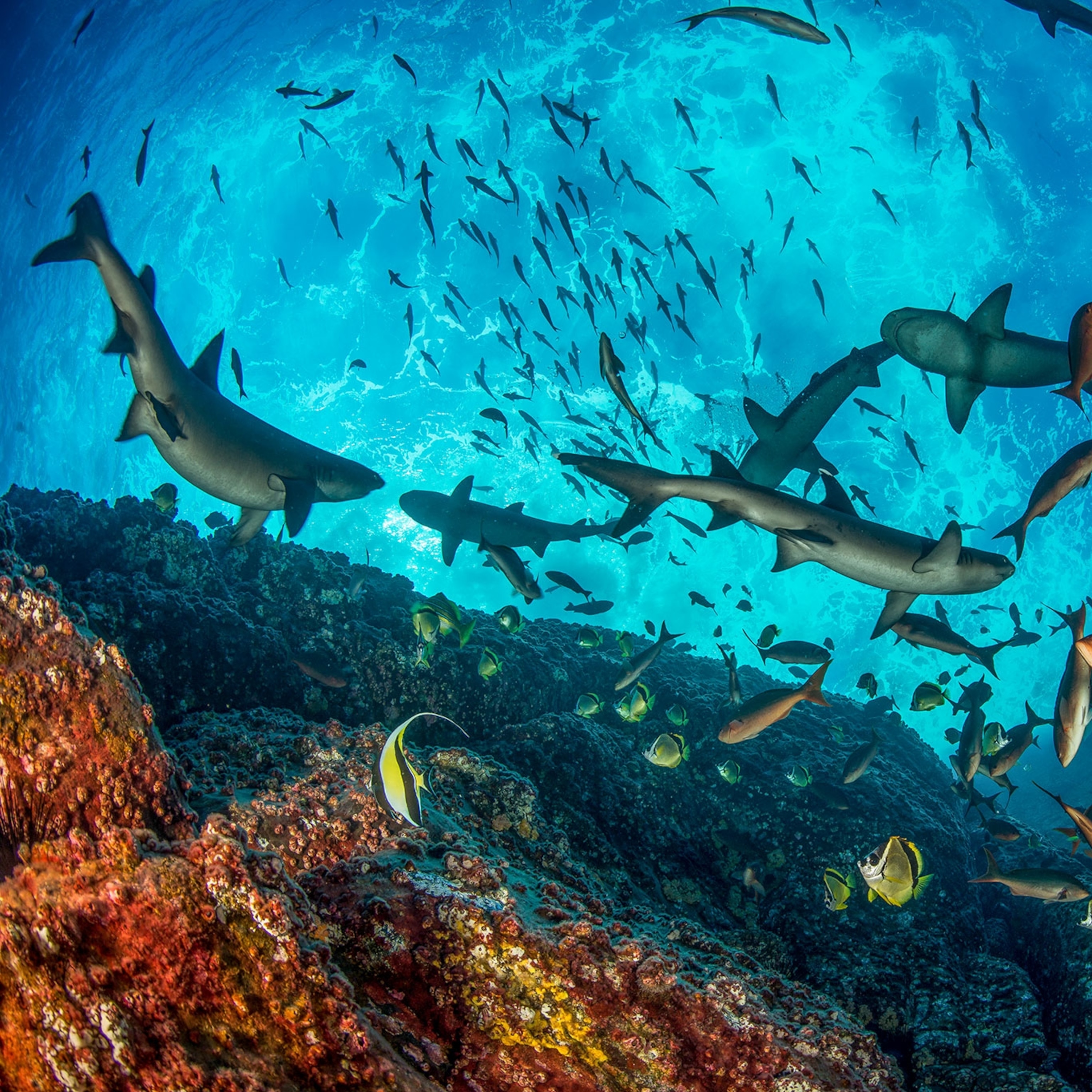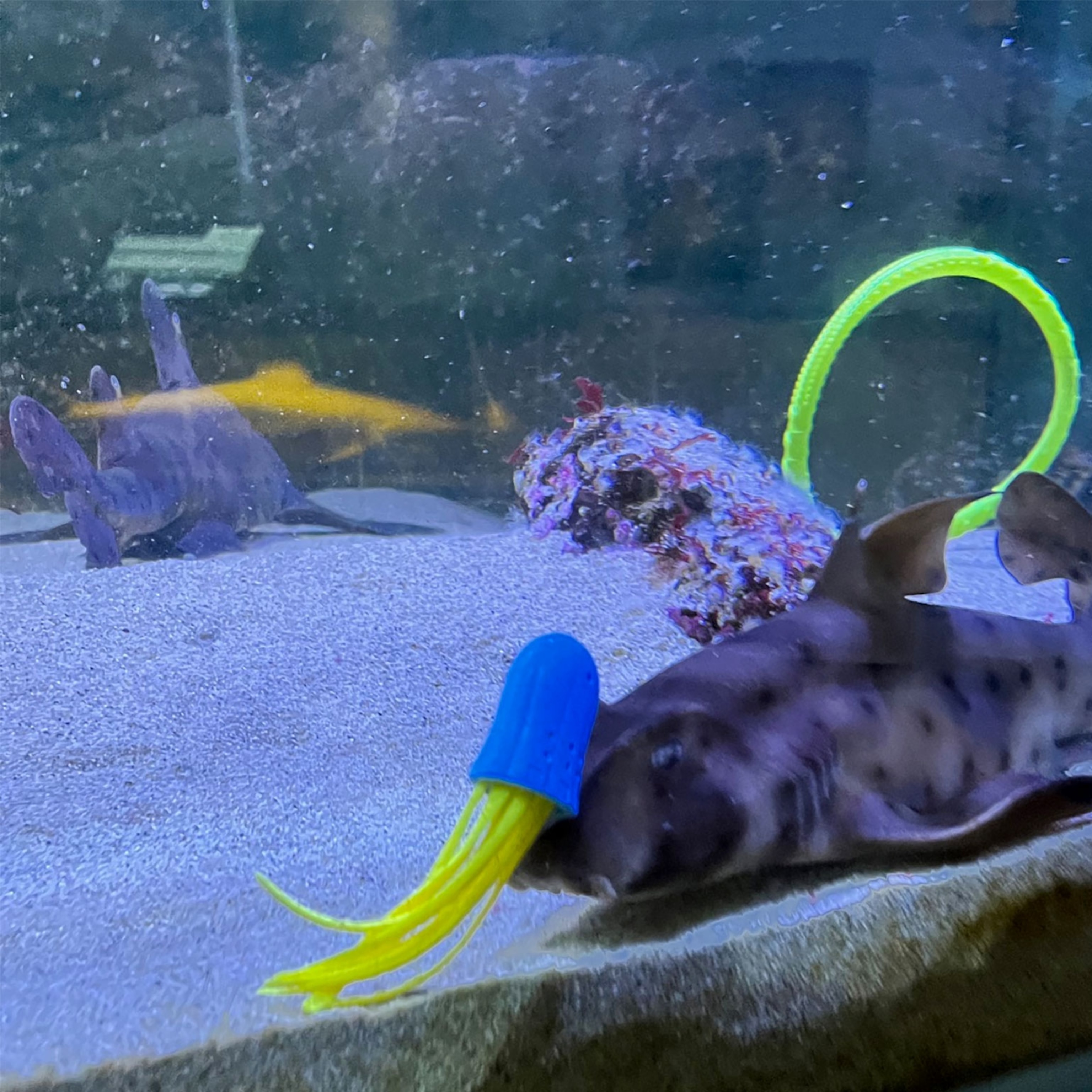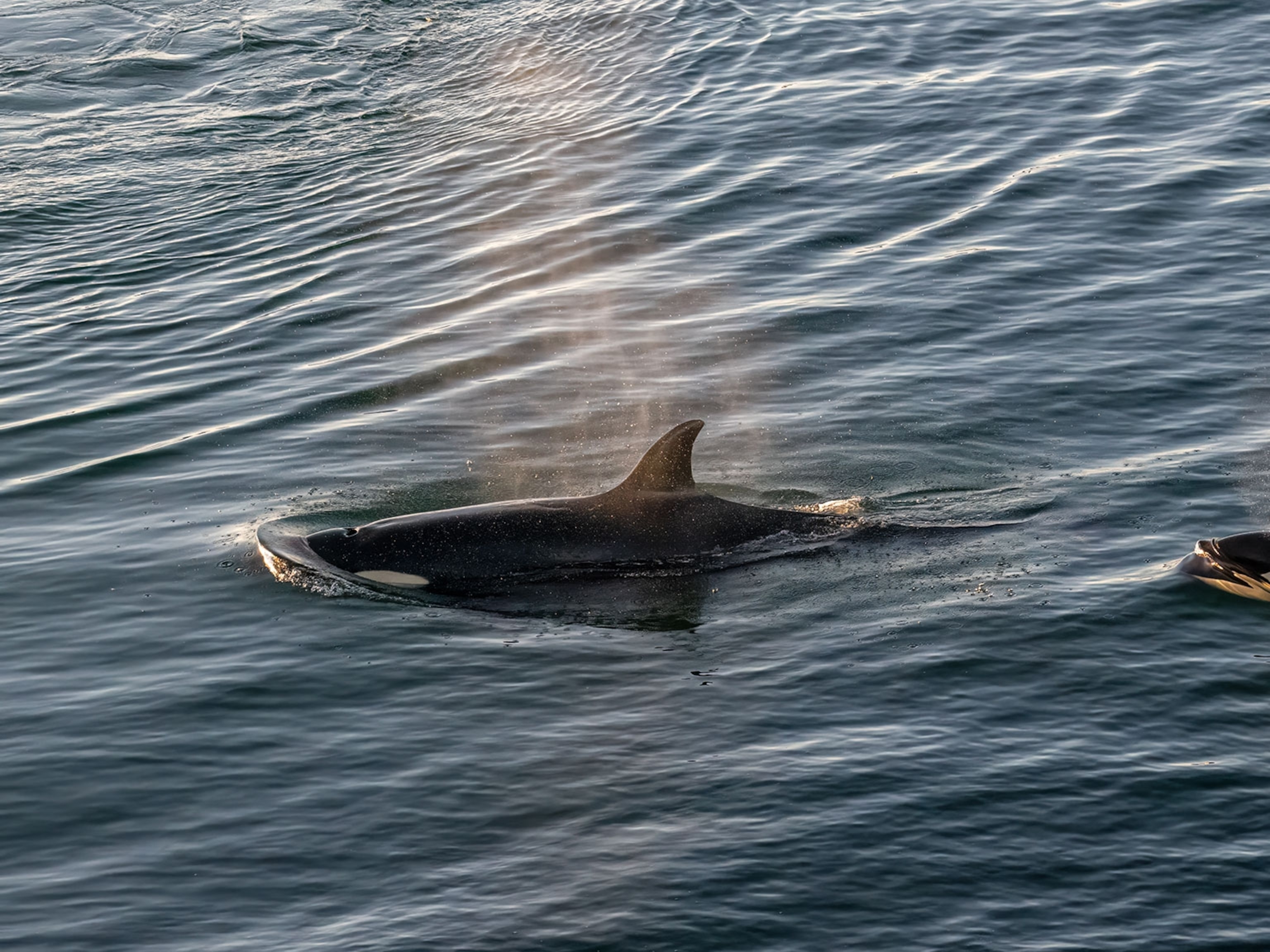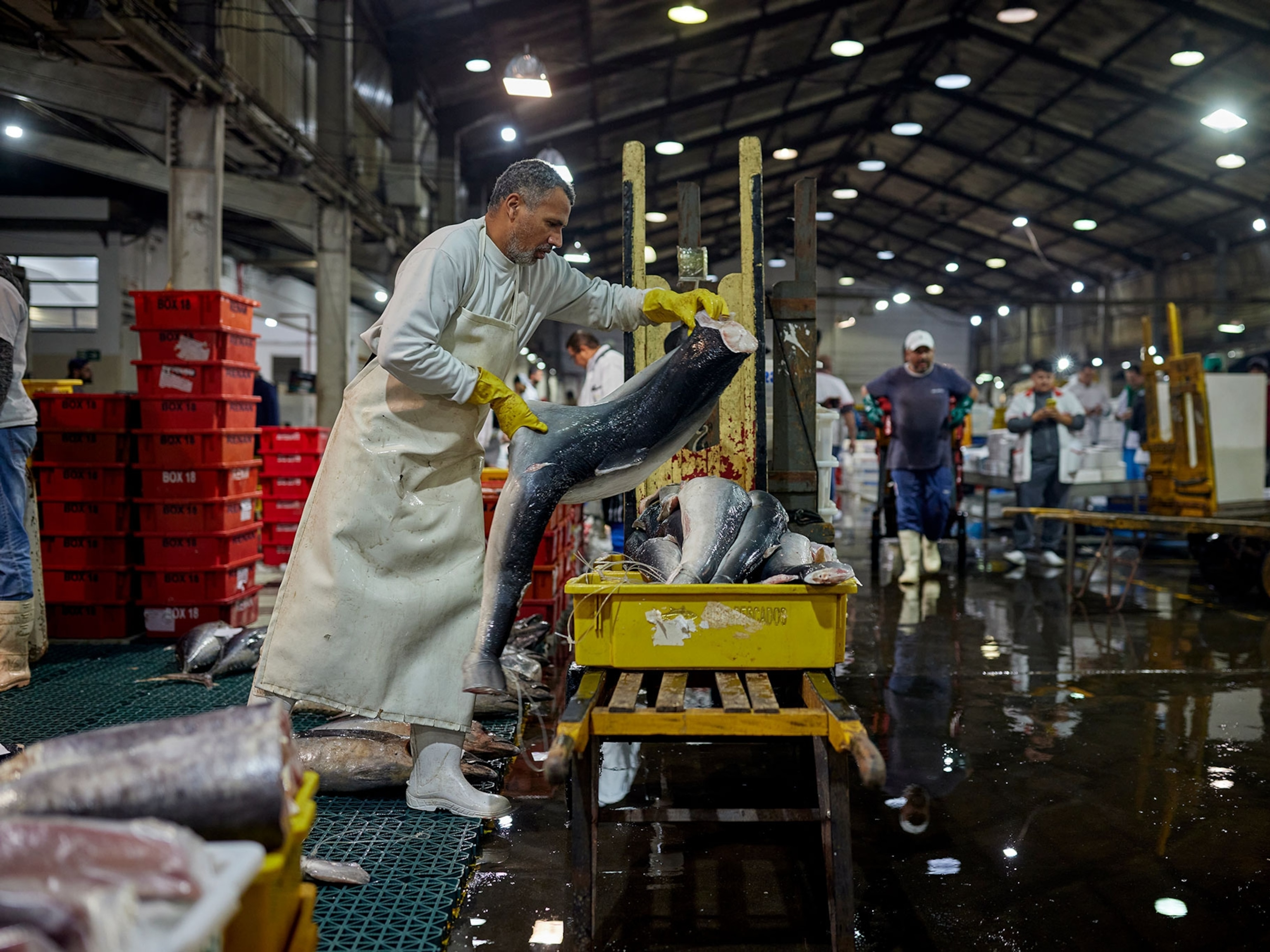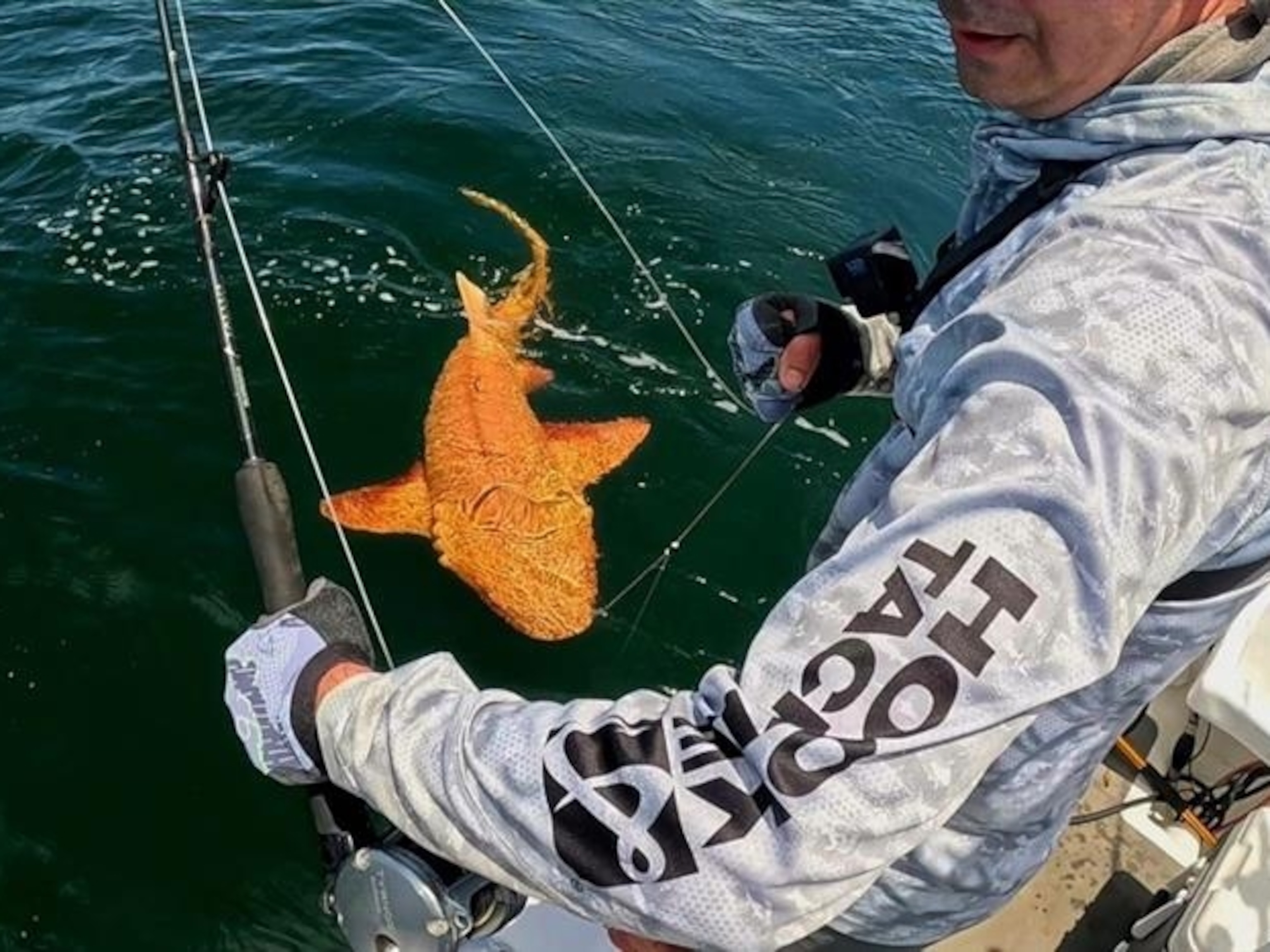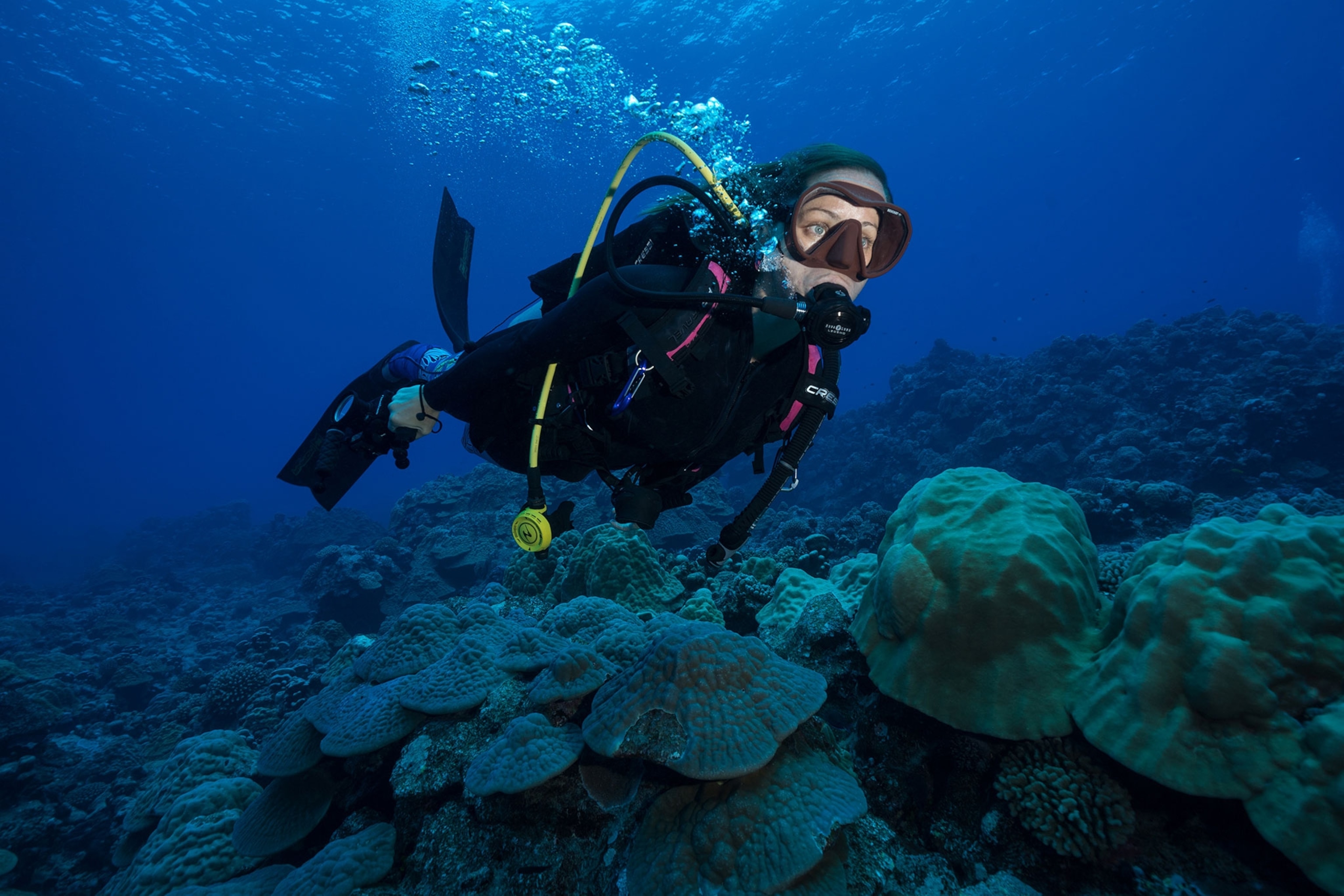
What It Takes to Guard a Giant Shark Sanctuary
An unlikely group—including a National Geographic explorer and a former shark smuggler—team up to protect the Cook Islands' sharks.
Rarotonga, Cook Islands — In a back room of a government ministry in Rarotonga, the largest of the Cook Islands, a former shark smuggler keeps watch over a wall of monitors. They display a satellite view of the world: red, yellow, and black dots and triangles prowl through the oceans, representing licensed fishing vessels of all nationalities and their reputation for abiding by the law.
Ministry of Marine Resources Secretary Ben Ponia introduces Captain Sai, who, before the government hired him, was known to inspectors as the region’s top shark poacher. As a young captain of a longline fishing boat in Fiji he’d sell fins to the Asian market, some of which fetch hundreds of dollars. Today, he's the inspector in charge of enforcing the Cook Island’s strict sanctuary, which aims to protect sharks from poachers and keep their fins off the market.
Captain Sai and other inspectors keep watch over the roving vessels. On a center screen is the Cook Islands, a string of 15 islands nestled near New Zealand in the South Pacific. In 2013, the Cook Islands put in place one of the world’s strictest and largest shark sanctuaries. Inspectors like Sarau board and search ships within their waters for illegal activity, shark fining or otherwise. Any boat found possessing shark parts in the 484-million-acre protected area of ocean around the nation must pay a minimum of $73,000.
The momentum for that law came in part from an American shark researcher named Jessica Cramp (now a National Geographic explorer), who moved to the Cook Islands in 2011 to help launch the sanctuary campaign. It went into law 18 months later, complete with one of the highest fines in the region levied on any person or boat found possessing shark parts.
But the success conservationists had in setting up the sanctuary didn’t hint at the challenges of enforcing it. With the sanctuary now law, Cramp has been trying to understand whether it works.
This keeps her busy gathering data on local fishing boats, hitching rides on commercial ships, and traveling throughout scattered island nations in the South Pacific. Her NGO, Sharks Pacific, works with communities on conservation strategies. On top of that, she’s finishing both a National Geographic grant to satellite tag 28 sharks and a Ph.D. to evaluate the effectiveness of the sanctuary in protecting migratory sharks. Through all of this work, she wants to find out: Can policy protect a species that crosses different ocean jurisdictions, including the lawless high seas? (Related: See how sharks measure up in size.)
Policing the Sea
In the Cook Islands, after the sanctuary law was implemented, the question for government and law enforcement officials became: How can such a massive conservation program be implemented and enforced?
At a beach bar called Trader Jack’s, a bartender slices off the top of a young coconut and hands it to Josh Mitchell, who settles at a picnic table. For a decade Mitchell oversaw the commercial fisheries that operate in the waters of the Cook Islands. Cramp, after a brief hesitation, soon found him to be one of her strongest allies.
“Jess wants to save the world and that's good,” says Mitchell. “I'm more jaundiced. I don't like waste.”
Mitchell calls himself a strategic manager who believes sustainability is best for the economy—not a preservationist just for the sake of it. Shark finning bothered him. “Aside from the fact that it's cruel,” he says, “it's sheer wastage.”
Shark finning caters to a massive market, primarily in Asia, where soup is considered a delicacy. Often fishing crews kept the fins to sell back home as bonuses. Finning was banned in the Cook Islands a few years before the shark sanctuary, but it was difficult to regulate. The law then stipulated that fins had to be attached to shark carcasses. Since boats can’t afford to carry extra weight, this proved that the sharks were caught accidentally in the lines and not targeted for their fins. But then the sanctuary, which now criminalizes any part of a shark found on board, made their jobs easier, Mitchell says.
He calls over an older man in blue sunglasses nursing a beer at the bar—one of the Ministry of Marine Resource’s 15 inspectors. “For us it was a God-save to have a sanctuary. If we caught you with one piece you're a goner,” the man says. “The word got out that if you mess with us, you're gonna get it.”
The reports by investigators are passed up the chain to the Ministry of Marine Resources, where it’s decided whether to seek prosecution or a fine from the company. This amount, Cramp says, has to be higher than the shark fin would fetch on the market.
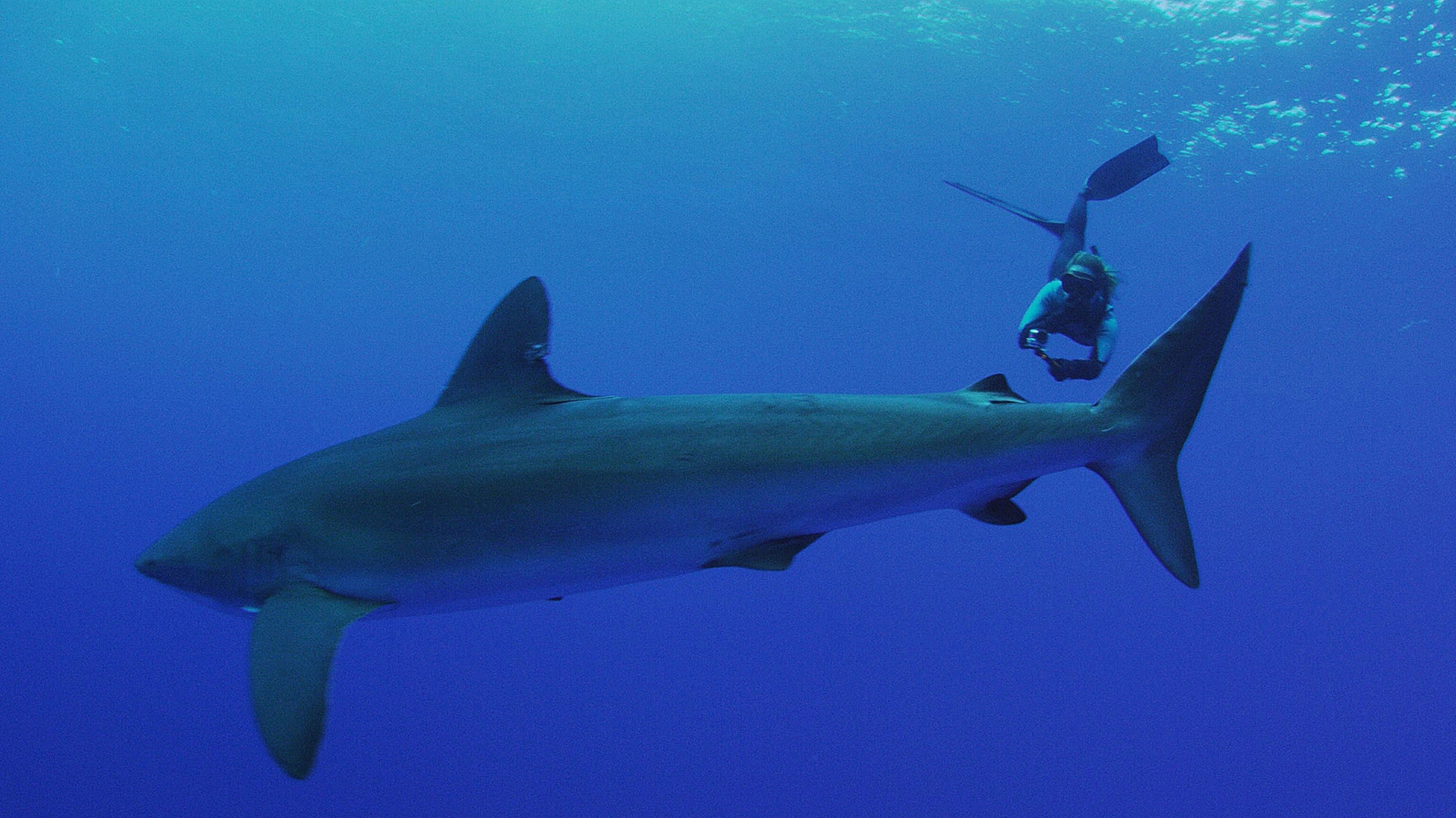
Last year, fishing brought $13 million in revenue to the island’s economy. With it comes sensitive diplomatic relations. There have been four fines settled since the shark sanctuary went into effect, for a total of $247,000 (one lower fine was for a local boat). But the zero-tolerance policy still has grey areas.
In 2013, a vessel seeking a medical evacuation came into the Cook Islands’ waters and was found to have shark carcasses aboard. The government issued a warning—not a fine. Ministry of Marine Resources Secretary Ben Ponia (he has since been suspended for undisclosed reasons) explains that they “took the humanitarian approach” to the situation. (Learn how one country is trying to protect its reefs.)
Battling Poachers
At the Marine Surveillance offices on the port, Commander Tepaki Baxter oversees a 12-person force that inspects every ship that enters the Cook Island’s waters. The officers share just one boat, and because the area is so massive it can take three days to get to the northernmost islands. Yet he and his patrol are serious about cracking down on the shark-fin trade, and what it represents.
“If you're willing to shark fin what else are you willing to do? Drugs, human trafficking, sex slavery?” asks one officer from behind his computer screen in their waterfront office.
The sanctuary, they say, has been successful in weeding out poachers. The last lone shark fin they found was in 2016, in a trash bag in the kitchen of a fishing boat. (The chef had planned to make soup.) But when Baxter describes the rules, they waver from what’s written in law—which stipulates that discovery of any shark part is subject to the fine.
“If we find a shark on board with a fin then it’s OK,” he says, adding that the important thing is for the shark carcass to be attached to the fin and the catch be recorded in the ship’s log book. This happens once a month, mostly on Asian boats, he says, and is reported to the Ministry of Marine Resources. (Learn how officials fight poachers with AI.)
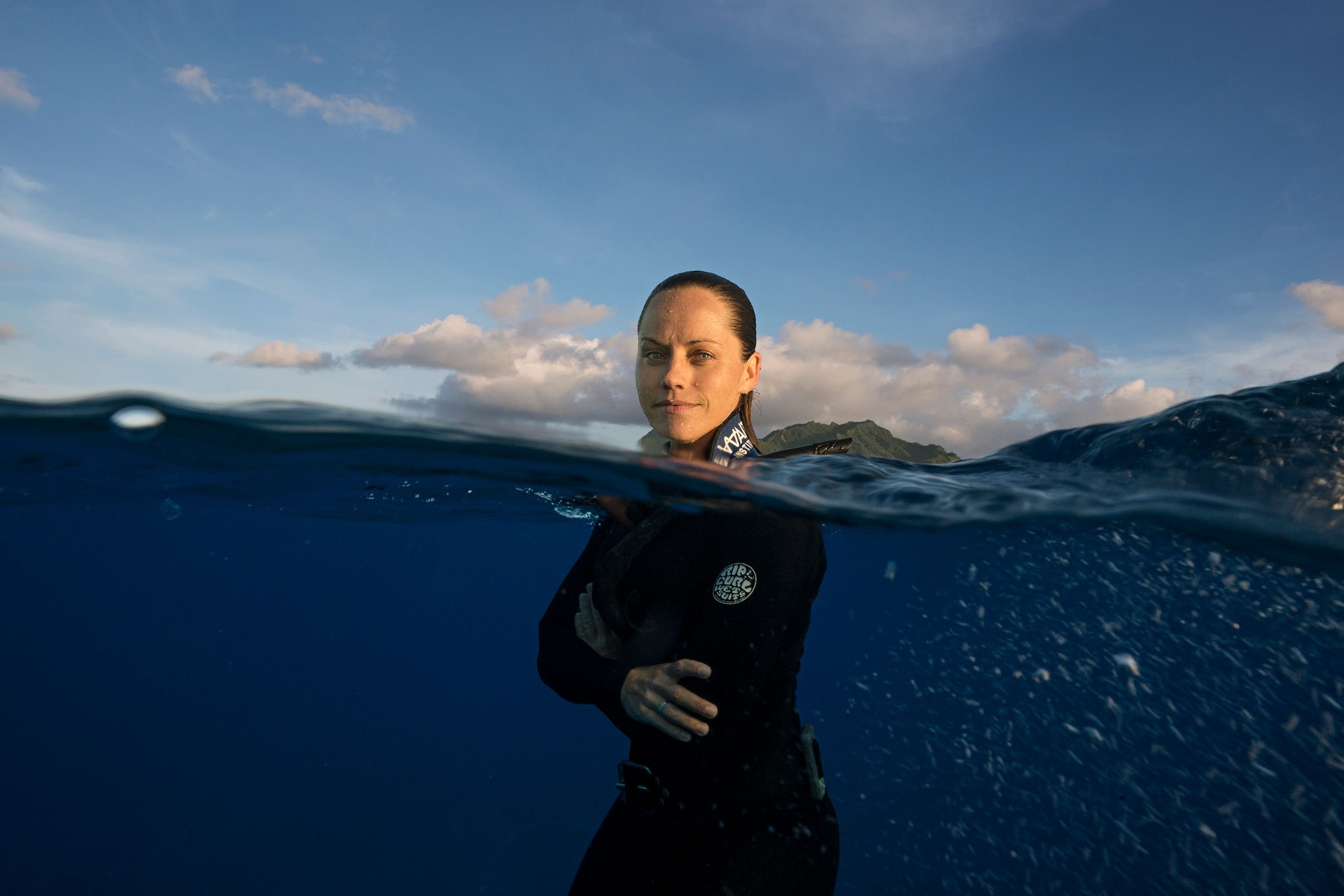
A young girl named Ina rides the back of a shark on the Cook Island’s three-dollar note. The legend is an island Romeo and Juliette—in it, Ina breaks a coconut shell on the shark's dorsal fin to sustain herself while escaping home to reunite with her love. The bills are so popular they’re hard to find in circulation.
But the reverence for sharks in the Cook Islands is fading, says marine biologist Teina Rongo. While the police and ministry tackle law enforcement, Rongo targets hearts and minds. He’s the only local with a PhD in marine biology living on the island, and he’s dedicated his life to teaching Cook Islanders about their natural heritage. He presents lessons about climate change in schools and consults on conservation with traditional leaders.
In the local Maori language sharks are a taurá atua—an animal guardian. Taura means “grounded” and atua means “god.” Together, he says, the words gives these creatures an important role: To be “what grounds you.” But as Rongo sees it, the respect for the shark sanctuary is not there yet—and needs to start with Cook Islanders.
“People have no patience,” Rongo says. “Old fishermen could find ways to get around sharks. Now people want to get in and out and if anything is in the way they kill it.”































